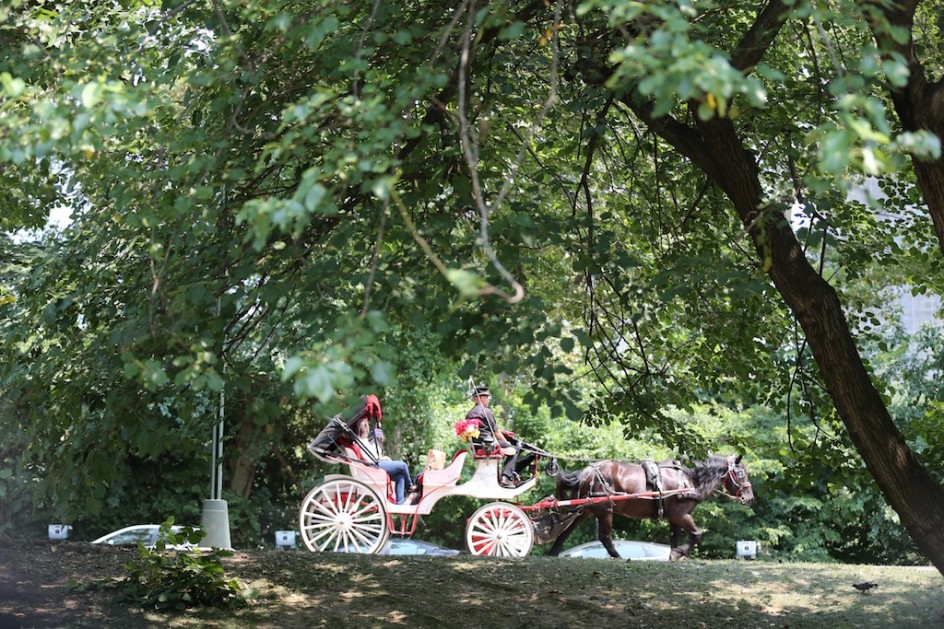
Central Park has enriched life in New York for more than 150 years. I know many of you reading this have been to the park where the horses work, but most have not had the opportunity to see this spectacular achievement, mostly the vision of Frederick Law Olmstead, the brilliant designer who created it.
For those of you who cannot see the horses there, I wanted to say that of all the things you see in the park today – pedicabs, joggers, bicyclists, food and water vendors, artists doing sketches, homeless men and women sleeping, popcorn vendors, cars, taxis and buses, park rangers and police officers on horseback, runners and baseball players, kids with cellphones and tourists and families with video cameras – the carriage horses are the most beautiful and natural things in the park, apart from the trees and gardens and magical landscapes.
Olmstead wrote that he designed every single bridge in the park to accommodate the big and beautiful horses, so that they would have room, could be seen by and move among the masses of people moving into the great city. Every road they ride on, every bridge they move over, every big path they turn on was built for them, and with them in mind. And from the first day the park opened, and every day since, the horses have been a part of life in the park, a way for people to see it, a thing for people to see. The horses are as organic to the park as the trees, as natural and appropriate.
The sound of their hooves rises – it always makes itself heard – among the great din, honking, sirens and exhaust of the defiling cars. As if they are sending their own messages in their own way.
I often wonder what Olmstead would make of a city 150 years later where, of all of the disparate and discordant things in the park – the carts, the pedicabs, the cars and buses, the city government has chosen to try to ban the horses, the first conveyances ever to be in the park, the most beautiful and most popular. How would he come to understand the idea that the work of these horses, prized so much and valued so highly that he built the park in part for them, is suddenly intolerable, abusive and cruel? Hundreds of pedicabs swarm the roadways, and for most of the day, taxis and cars and cards, dogs and bicycles clog the roads through the park. No one has suggested banning or curtailing them, only the horses would be banned by the mayor.
It seems that everything about the carriage horse controversy is a moral inversion, the crazed logic of the White Rabbit. The spirit of and will of Olmstead is so very clear. Every bridge was built so that every person walking in the park could look up and see the big and beautiful horses pulling their carriages through the park. Is New York City really a place where cars and taxis stay forever but the horses in the park will never be seen again?
Olmstead’s spirit can join the other voiceless victims of this sad campaign – the tourists, the children, the lovers, the people who truly love animals and wish them to remain in our world – they challenge us to understand right from wrong and truth from lies and keep the horses in the city and the park, which was built for them. Sometimes it seems that they are the only living things that truly belong there.
